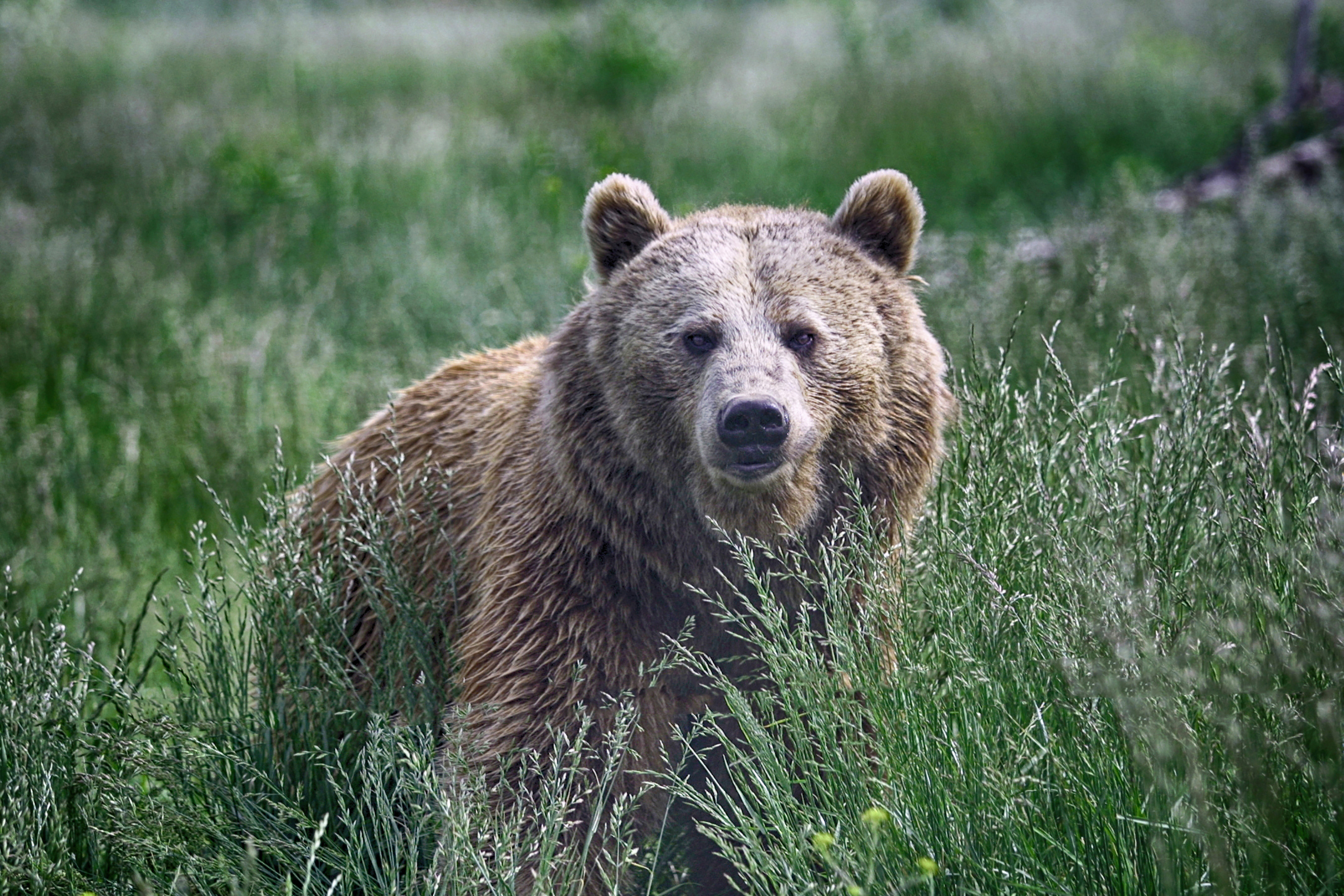The Endangered Species Act, explained
Today is Endangered Species Day. Get smart fast!

Today is Endangered Species Day, an annual reminder (falling on the third Friday of every May) to recognize America's conservation efforts. Celebrate by reading up on the Endangered Species Act:
What is the Endangered Species Act?
The Endangered Species Act was passed almost unanimously by Congress in 1973 under Republican President Richard Nixon. The law was meant to recognize the "esthetic, ecological, educational, recreational, and scientific value" of preserving the nation's wildlife heritage. The act granted the federal government the power to protect endangered and threatened species, as well as habitats deemed critical to those species' survival. Today, 1,446 animal species and 945 plant species are listed as either endangered or threatened.
The Week
Escape your echo chamber. Get the facts behind the news, plus analysis from multiple perspectives.

Sign up for The Week's Free Newsletters
From our morning news briefing to a weekly Good News Newsletter, get the best of The Week delivered directly to your inbox.
From our morning news briefing to a weekly Good News Newsletter, get the best of The Week delivered directly to your inbox.
How does the Endangered Species Act work?
Under the act, the U.S. Fish and Wildlife Service was tapped to oversee all land animals and plants, as well as freshwater fish. The National Marine Fisheries Service was put in charge of marine fish and wildlife. Endangered species are defined as species "likely to become extinct through all or a large portion of their range," whereas threatened species are "likely to become endangered in the near future."
A species gets a spot on the endangered or threatened list after an evaluation. To qualify for protection, the National Wildlife Federation explains that a species must have seen a large percentage of its habitat "degraded or destroyed"; face the threat of "disease or predation"; lack protection from current regulations; have been "over-consumed by commercial, recreational, scientific, or educational uses"; or had its "long-term survival" threatened by "other manmade factors."
Once a species clears the evaluation, it gets on the federal government's protected list, preventing it from being traded or sold and from "take," which the act defines as to "harass, harm, pursue, hunt, shoot, wound, kill trap, capture, or collect, or to attempt to engage in any such conduct."
A free daily email with the biggest news stories of the day – and the best features from TheWeek.com
When a species' existence is determined to be relatively stable, it may be downgraded from the endangered list to the threatened list.
Is the Endangered Species Act effective?
Proponents point to the law's many successes, including the rehabilitation of species such as the bald eagle, the Florida panther, the grey wolf, the grizzly bear, and the peregrine falcon — to name just a few. A study suggested that 172 species may have gone extinct between 1973 and 1998 if the Endangered Species Act had not been introduced.
"Based on data from the [Fish and Wildlife Service], the ESA has saved 99 percent of listed species from extinction," Jamie Rappaport Clark, president and CEO of environmental nonprofit Defenders of Wildlife, told Congress when she testified this year. Proponents argue that even if a species is not entirely delisted, it's still a win to save it from extinction. A reported 68 percent of the species protected under the Endangered Species Act are "stable or improving," the National Wildlife Federation said.
Are there any problems with the Endangered Species Act?
Opponents argue that the regulations imposed by the act are too restrictive and far-reaching, hampering business opportunities and hindering economic growth in industries such as logging, mining, and drilling. James Holte of the Wisconsin Farm Bureau Federation told Congress in a hearing in February that farmers and ranchers consider it their personal responsibility to be stewards of the land," but the ESA makes it tough to "balance agriculture production with wildlife habitat" because of the land use restrictions that can be placed on a farmer's private land.
Critics also contend that the law doesn't even work that well. Though 1,600 species have gained protection under the act, "less than 70 have reached full recovery," The Associated Press reported.
And some farmers argue that species recovery isn't always a good thing. Holte said that since the grey wolf population has been brought back from the brink, there have been more "interactions between farmers, their livestock, [and] rural residents," resulting in "more than $200,000 in damage."
What's next for the Endangered Species Act?
President Trump has vowed to roll back any regulations restricting business, and he's made it clear that he thinks environmental regulations in the U.S. are "out of control." "Our friends that want to build in the United States, they go many, many years and then they can't get the environmental permit over something that nobody ever heard of before," he said. "And it's absolutely crazy. I am, to a large extent, an environmentalist. I believe in it. But it's out of control."
Republicans have long pushed for the easing the Endangered Species Act's regulations, and now that the GOP has control of both chambers of Congress, they could finally get some traction. Already, the Senate has held a hearing to discuss how to "modernize" the Endangered Species Act. A proponent of the act warned that in her experience, efforts to "modernize" have "almost always been code to push forward an agenda to weaken or gut" the conservation law.
-
 How climate change is affecting Christmas traditions
How climate change is affecting Christmas traditionsThe Explainer There may be a slim chance of future white Christmases
-
 The MAGA civil war takes center stage at the Turning Point USA conference
The MAGA civil war takes center stage at the Turning Point USA conferenceIN THE SPOTLIGHT ‘Americafest 2025′ was a who’s who of right-wing heavyweights eager to settle scores and lay claim to the future of MAGA
-
 The 8 best drama movies of 2025
The 8 best drama movies of 2025the week recommends Nuclear war, dictatorship and the summer of 2020 highlight the most important and memorable films of 2025
-
 Are zoos ethical?
Are zoos ethical?The Explainer Examining the pros and cons of supporting these controversial institutions
-
 Will COVID-19 wind up saving lives?
Will COVID-19 wind up saving lives?The Explainer By spurring vaccine development, the pandemic is one crisis that hasn’t gone to waste
-
 Coronavirus vaccine guide: Everything you need to know so far
Coronavirus vaccine guide: Everything you need to know so farThe Explainer Effectiveness, doses, variants, and methods — explained
-
 The climate refugees are here. They're Americans.
The climate refugees are here. They're Americans.The Explainer Wildfires are forcing people from their homes in droves. Where will they go now?
-
 Coronavirus' looming psychological crisis
Coronavirus' looming psychological crisisThe Explainer On the coming epidemic of despair
-
 The growing crisis in cosmology
The growing crisis in cosmologyThe Explainer Unexplained discrepancies are appearing in measurements of how rapidly the universe is expanding
-
 What if the car of the future isn't a car at all?
What if the car of the future isn't a car at all?The Explainer The many problems with GM's Cruise autonomous vehicle announcement
-
 The threat of killer asteroids
The threat of killer asteroidsThe Explainer Everything you need to know about asteroids hitting Earth and wiping out humanity